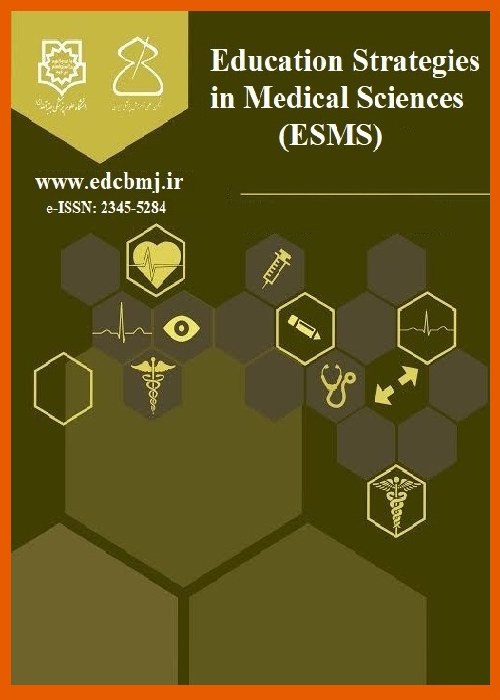Designing a Knowledge management model with an emphasis on Creativity and development of faculty members in universities executing distance Education
Author(s):
Abstract:
Background And Aims
The present study aimed to designing a Knowledge management model with an emphasis on Creativity And faculty members development in universities executing distance Education.Methods
The research method is combination of quantitative-qualitative type. The study population consists of all faculty members of distance education administration universities around the country that counts to 5101 members. In the qualitative phase sampling, by using purposive sampling method (convenient), consist of 12 experts in the field of management and in quantitative phase, include random sampling. To gather data, researcher used three types of self-made questionnaire (knowledge management and Creativity, improvement of faculty members). Data normality was analyzed using the Kolmogorov-Smirnov test. Using structural equation model, which in fact is a combination of path analysis graph and confirmatory factor analysis, structural equation models were used to analyze the path and model fitness (using AMOS software).Results
Findings indicate that the current status of knowledge management and faculty members development in distance learning administration universities holds a desirable level for its all components with regard to the average result of criteria average (50). Pearson coefficient results show that there is a direct and strong significant correlation between two variables of knowledge management and creativity and also between creativity and improvement in the statistical community; and considering variable arrangement are defined 66 percent for improvement variance and 62 percent for creativity variance. The obtained model also has a good fit.Conclusions
To keep pace with new developments in the training of faculty members, we need creativity and continuous improvement of personal, professional and organizational in knowledge, skills and attitudes they have and if we do the job well, they can change into very useful elements in universities.Keywords:
Language:
Persian
Published:
Iranian Bimonthly of Education Strategies In Medical Sciences, Volume:9 Issue: 4, 2016
Pages:
315 to 327
magiran.com/p1654129
دانلود و مطالعه متن این مقاله با یکی از روشهای زیر امکان پذیر است:
اشتراک شخصی
با عضویت و پرداخت آنلاین حق اشتراک یکساله به مبلغ 1,390,000ريال میتوانید 70 عنوان مطلب دانلود کنید!
اشتراک سازمانی
به کتابخانه دانشگاه یا محل کار خود پیشنهاد کنید تا اشتراک سازمانی این پایگاه را برای دسترسی نامحدود همه کاربران به متن مطالب تهیه نمایند!
توجه!
- حق عضویت دریافتی صرف حمایت از نشریات عضو و نگهداری، تکمیل و توسعه مگیران میشود.
- پرداخت حق اشتراک و دانلود مقالات اجازه بازنشر آن در سایر رسانههای چاپی و دیجیتال را به کاربر نمیدهد.
In order to view content subscription is required
Personal subscription
Subscribe magiran.com for 70 € euros via PayPal and download 70 articles during a year.
Organization subscription
Please contact us to subscribe your university or library for unlimited access!


